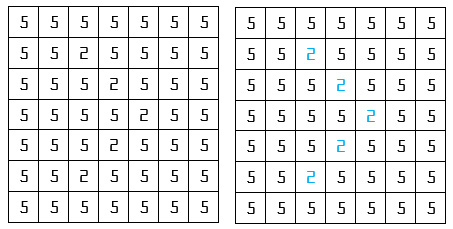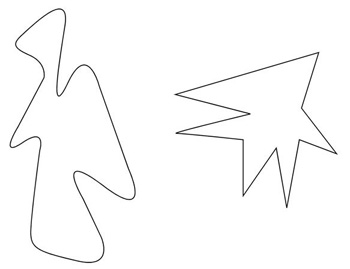Synesthesia literally means “joined perception” (“syn” together & “aesthesis” perception) and is a blending of two or more senses simultaneously perceived into one anomalous event – a cross-wiring between brain areas that are normally segregated in nonsynesthetic individuals.
For example, synesthetes may hear, smell, taste or feel pain in color. Others taste sounds or perceive letters and numbers in color. And the perception is the same every time for an individual, although they may differ from person to person.
The most common type of synesthesia is called grapheme-color synesthesia and involves seeing monochromatic letters, digits and words in unique colors.

An example of how nonsynesthetic (left) and synesthetic (right) individuals might see a set of numbers.
The neural mechanism causing synesthesia remains unknown but it seems to be a dominant trait and it may be located on the X-chromosome (supported by the fact that synesthesia appears often inherited). Some developmental scientists speculate that all humans are born synesthetic but that normal developmental results in more segregated perception areas of the brain, and still synesthesia is not considered a neurological disorder.
The occurrence of synesthesia is in question, with some estimates being one in 2,000 and others being as low as one in 200. Women are more likely (as much as three to eight times) than men to have synesthesia, and synesthetes are more likely to be left-handed.
Some Characteristics
Synesthesia is more common among artists, musicians, and novelists (8 times more likely) and some very famous people are known synesthetes including: Vincent Van Gogh, Marilyn Monroe, Leonard Bernstein, Duke Ellington, Itzhak Perlman, Stevie Wonder, Billy Joel, and Lady Gaga.
Franz Liszt was quoted as telling his orchestra instructions such as,
“O please, gentlemen, a little bluer, if you please! This tone type requires it!” or, “That is a deep violet, please, depend on it! Not so rose!”
And some synesthetes like the physicist Richard Feynman possess “conceptual synesthesia” where they see abstract concepts: units of time, mathematical operations, shapes. Feynman once said,
“When I see equations, I see the letters in colors – I don’t know why. As I’m talking, I see vague pictures of Bessel functions from Jahnke and Emde’s book, with light-tan j’s, slightly violet-bluish n’s, and dark brown x’s flying around.”
One interesting characteristics of synesthesia is that it seems to enhance memory – the secondary synesthetic perception is remembered better than the primary perception
And one perplexing characteristic is the typical experience of seeing characters in two colors at the same time: the original printed color and the synesthetic color.
Synesthesia as human experience
Neuroscientist Vilayanur Ramachandran gave an excellent TED Talk where he discussed three examples of connection between cerebral tissue in the brain, one of which was synesthesia. In the talk Ramachandran made the case that the type of cross-wiring which occurs in synesthesia actually happens with us all, but we don’t recognize it. One example would be the way we experience sound coupling in movies, with images and spoken words coming together as one experience. Ramachandran provided a simple example. He called the characters below letters of a Martian alphabet and named them “booba” and “kiki.” Then he asked his audience to guess which was which – they almost unanimously said that booba was the image with rounded shapes and kiki was the one with jagged shapes.

We are all somewhat synetheisc.
Web applications
I see an interesting potential for usability that might come from better understanding synesthesia – better consumption of visual and textual information. One simple example can be found in the Beeline Reader, an application that converts text into color gradient text to make it more readable.
Related Articles
- Synesthesia
- What is synesthesia?
- Everyday fantasia: The world of synesthesia
- Do you see music in colors
- Synesthesia test
- List of people with synesthesia – Famous Synesthetes
- Ted Ed – What color is Tuesday? Exploring synesthesia – Richard E. Cytowic

- Nova Now, Steffie Tomson

- Daniel Tammet: Different ways of knowing
